Quechua’s 4-Man Inflatable Camping Tent is a 4-person tunnel tent that makes use of inflatable air beams, rather than traditional poles, to assume its shape. In essence, it does exactly what it says on the tin, a feature often present in the less-than-imaginative names of Decathlon’s products.
Though quite why ‘4-man’ and not “4-person” I’m not sure. I don’t think I’m being woke in pointing out that women can camp in this tent too.
Aesthetically, the tent wears its air beams with pride, like three exposed ribs in a protective embrace around the flysheet. There are two rooms, a bedroom and a living room, while the entrance also has a small, poled awning.
While the living room reaches a height of 190cm, it tapers to 160cm by the time you reach the bedroom doors.
So, while it’s relatively roomy for a family tent, it’s not as spacious as some other inflatable tents. Nevertheless, its impressively dark bedrooms and the cool conditions provided by its Fresh & Black fabrics are a real strength – these are among the best I’ve seen in this kind of tent.
The package has an RRP of £349.99 ($499), putting it at the budget end of the air tent spectrum, though the pump isn’t included and costs £24.99 – more on this in a mo.
Considering its overall quality (there are quite a few nice design touches) and liveability, the tent represents excellent value and works very well as a home-from-home for small family camping trips.
Pros
- Cool, even on hot days
- Good interior storage components
- Impressively dark bedroom
- Quick and easy to pitch and pack away
Cons
- Pump not included
- No option to segregate bedroom
- Window shutter design could be improved
| RRP: | £349.99 / $499 |
| Weight: | 15kg / 2st 5lb |
| Packed size: | 65 x 40 x 42cm |
| Internal dimensions: | 480 x 290cm |
| Internal peak height: | 190cm |
Shape, structure, pitching and internal liveability
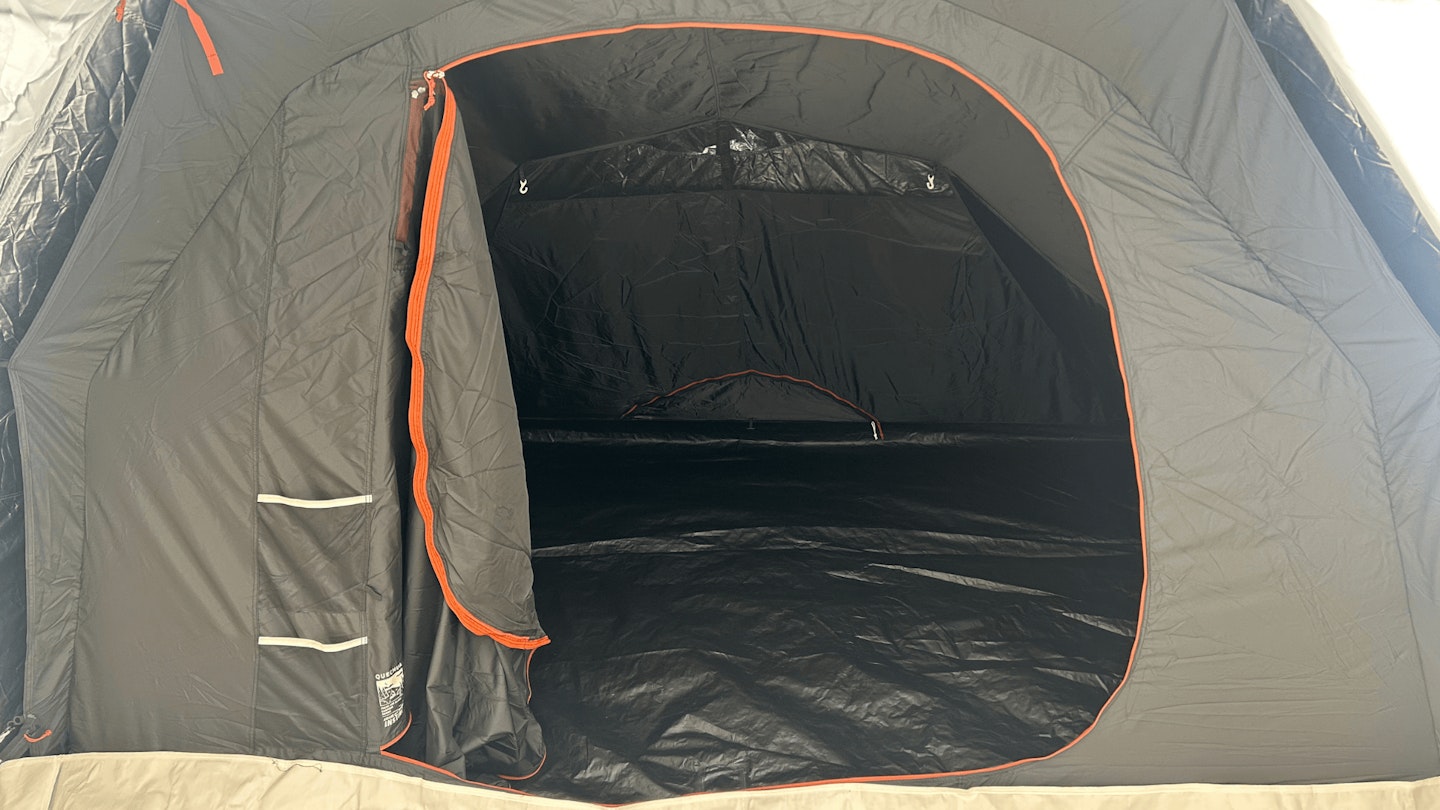
The tent is pre-assembled, with the inner of the bedroom attached to the fly before you’ve even begun pitching. This makes setup easy as pie – the beams inflate quickly and the awning pole and bar are also straightforward to install.
But, here’s a real irritation: the pump isn’t included, you have to buy it separately. It costs £24.99, which isn’t my gripe really. My gripe is that I can well imagine someone buying this tent – assuming that it’ll, of course, come with the appropriate pump – before turning up at the campsite and having to tell the kids that they’re heading back home.
Surely selling an air tent without its pump is akin to selling a traditional tent without its poles? Decathlon, just add it to the package and increase the cost? It’s all a bit Ryanair. This tent would still be good value without hiding the additional cost of the pump.
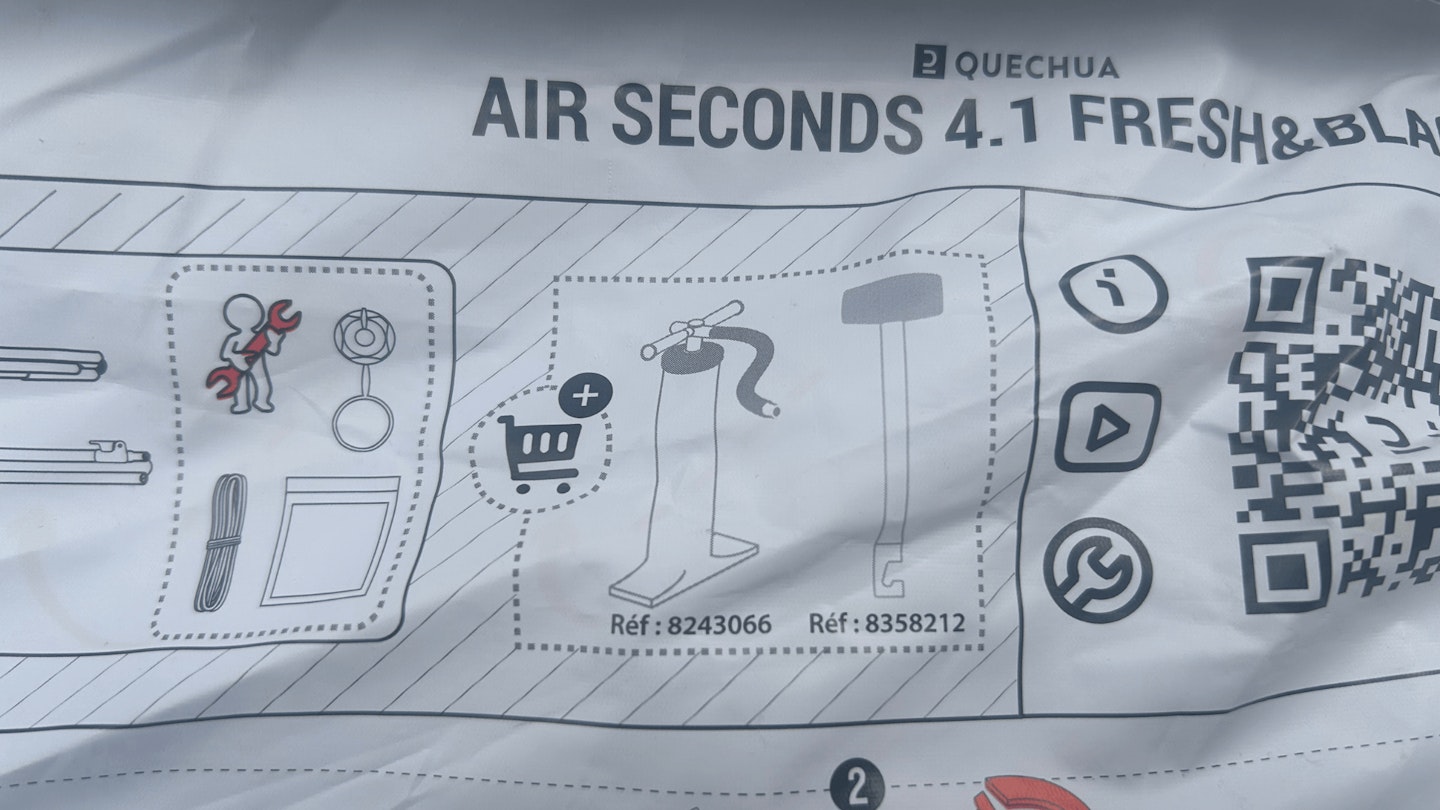
Rant over, the good news is that initial pitching was really straightforward once I’d got hold of an appropriate pump and pegged out the four corners.
The beam’s air valves aren’t as flashy as on some inflatable tents. This makes them more intuitive but a little bit slower to work with than the spring loaded valves on the likes of the Berghaus Air 400 and the Outwell Colorado 5 Air.
Here, the valves come in two parts: a larger part that screws onto the beam and a smaller valve that screws on top of this. It was obvious to me that by removing the larger part, the beam would quickly deflate, which in turn meant that the smaller valve must be for inflation, opening to let air in while not allowing air to escape.

I can’t speak to the quality of the absent Decathlon pump, as I used another tent’s pump and its handy array of adapters to get the tent inflated.
Nevertheless, achieving a pressure of 7psi in each beam was easy enough and it wasn’t long before I was affixing the awning pole, fitting the interior support pole and pegging out the rest of the tent and its guylines.
After a couple of practices, it took me 13 minutes to get the tent to a habitable state and 27 minutes in total to get it fully setup.
It’s also very easy to pack away – I just had to remember to remove the ceiling bar and awning poles before letting the air out of the beams. It’s carry-bag features a large, zippered opening lengthways along its top.
I was able to dump the bundle on top of the sack and work the bag around it before zipping it all up – easier than some air tents, that’s for sure.
Once inside, there’s a real contrast between the bright and airy living room and the dark bedroom. At 190cm, the living room is tall enough to wander around in – well, for little old 172cm tall me anyway.
It’s not the largest in terms of area, at 290 x 230cm, but there’s still enough room for a few camping chairs and a camping table. There’s no slot for electrical hookup, which is a shame.

The biggest plus is the wonderfully dark bedroom, which excels even on balmy sunny days. Not only this, the whole tent is a cool place to be. I don’t mean cool as a hangout like a skate park or anything – Quechua’s logo hardly has Nike’s or Patagonia’s cachet – but cool in its more literal sense.
It’s patented Fresh & Black fabrics reflect the sun’s rays, keeping the interior nicely chilled on days when many other tents would feel stuffy. This is a real boon.
At 280 x 210cm, the bedroom is roomy enough for four adults, though it’d be a bit of squeeze. It’s much more likely that it’ll be used by families, and it fits two adults and two kids no problem.
Those who prefer what little privacy a thin segregating sheet of black fabric provides in some family tents will be disappointed to find out that this is very much an open bedroom, with no option to install a divider.
Waterproofing
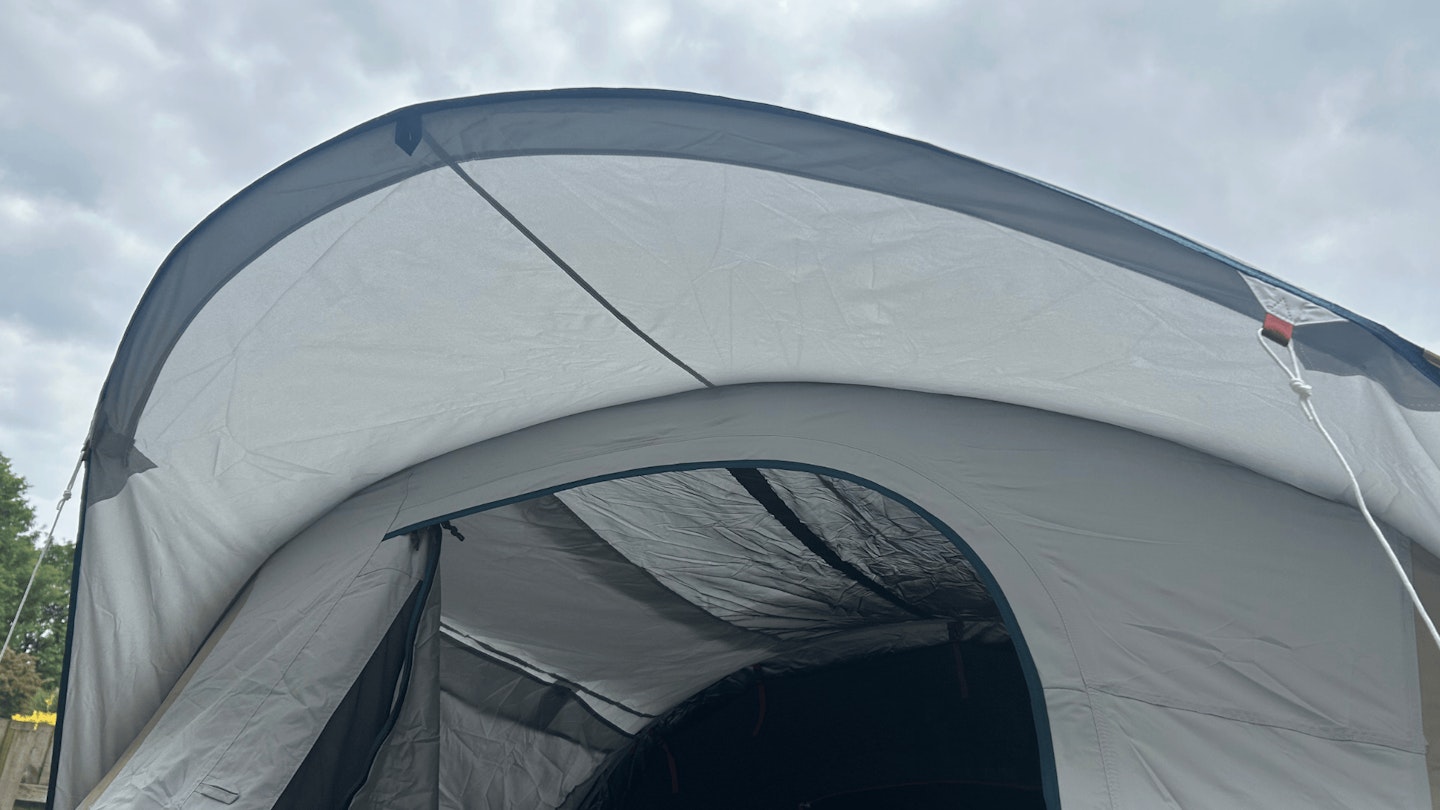
Decathlon’s two-stage testing – one in the lab, the other in the real world – has arrived at a hydrostatic head figure of 2,000mm for the PU-coated polyester flysheet. Hydrostatic head (HH) is a measure of how much water can be pressed against a fabric before the pressure gets too much and water starts working its way through.
An HH of 2,000mm is pretty decent and means the tent should stand up to prolonged heavy rain, though it’s not as impressive as the 6,000mm rating that the Berghaus Air 400 sports.
However, there’s more to a tent’s ability to repel the elements than its hydrostatic head rating alone. Fully taped seams are de rigueur in everything from tents to waterproof jackets and this tent is no different, while the rugged polyethylene groundsheet halts ingress from below.
On test, the tent seemed perfectly competent at dealing with some typically British weather – it’s always satisfying seeing little beads of rain race each other across a flysheet, or is that just me?
Condensation
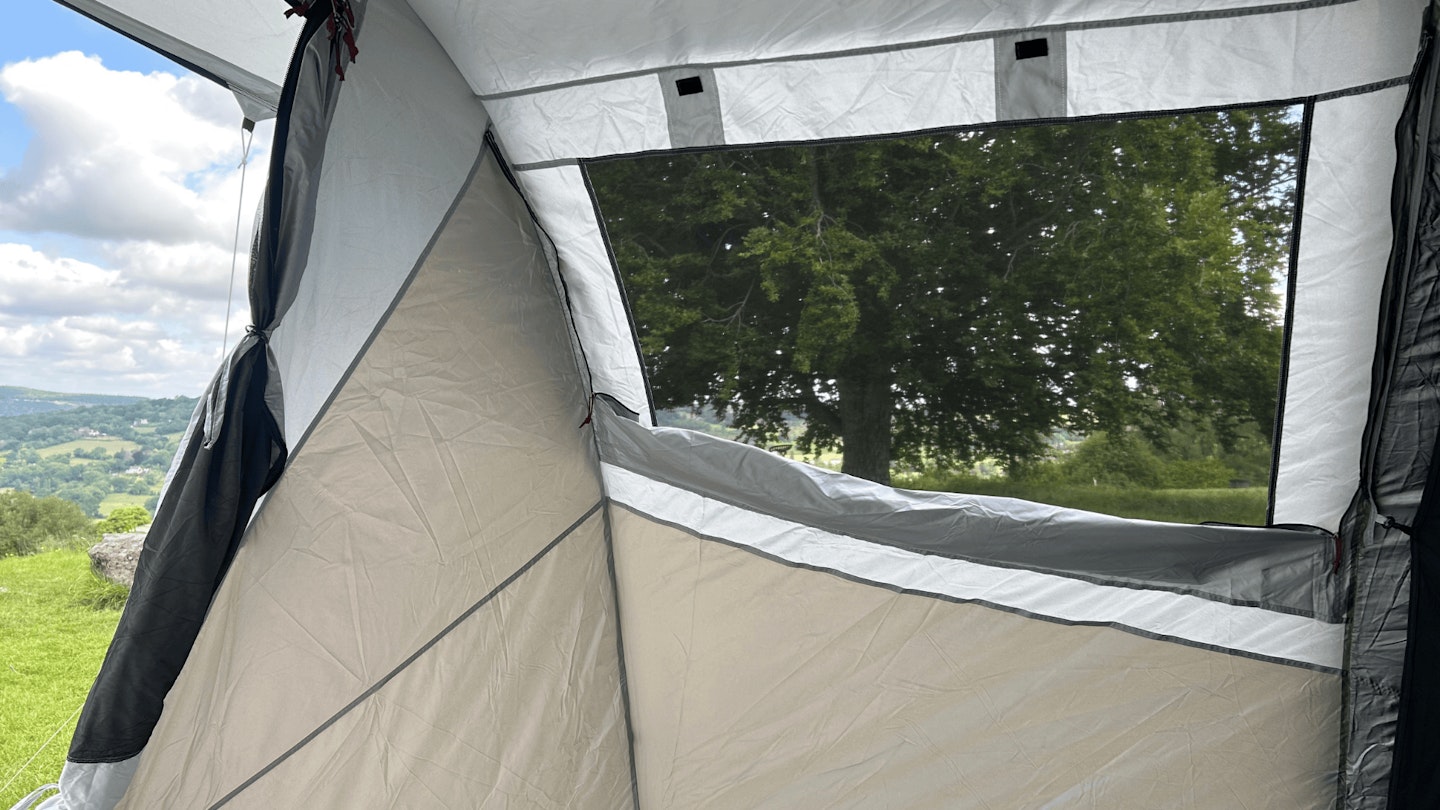
The bedroom sleeps four and this could be a recipe for condensation when all the doors are closed. Fortunately, the bedroom has both a ventilation hatch by the rear floor and mosquito mesh up high. Behind this mesh is a hatch in the flysheet, while the living area also boasts ventilation hatches.
I found that this led to an airy-feeling tent that was pleasant to sleep in even on muggier nights. The combination of its ventilation features with the Fresh & Black materials works beautifully – there are few tents I’d rather sleep in when the mercury rises beyond the norm.
Wind protection
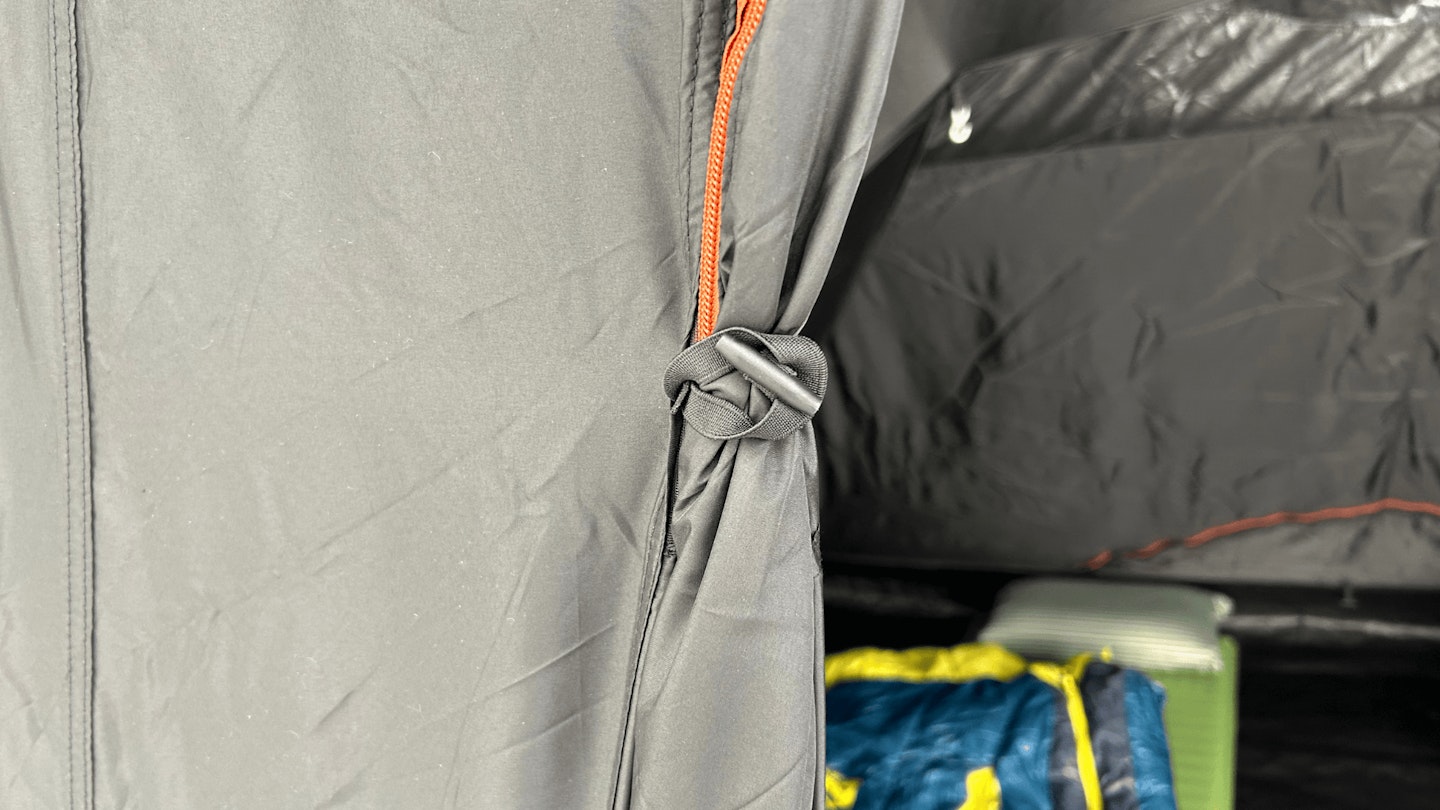
Despite performing fine on test in blustery conditions, the 4-Man Inflatable Camping Tent isn’t the most wind resistant air tent around. Tested on Decathlon’s wind tunnel and turntable, Quechua states that it’s habitable up to storm force seven winds, equivalent to 60km/h (37mph).
Of course, this is when optimally set up, with correct pressure in the beams and the guylines deployed in the right way. Decathlon recommends regular reinflation of the poles during a longer trip, which seems like a wise idea if it’s going to be gusty.
Having said all this, most car camping holidays take place in nicely sheltered campsites, not Everest Basecamp – so, as long as you’re aware of the forecast, all should be well. On test, I found the tent was nicely stable throughout, though I wasn’t exactly chasing tornados to audition for the next Twister film.
Weight and packed size
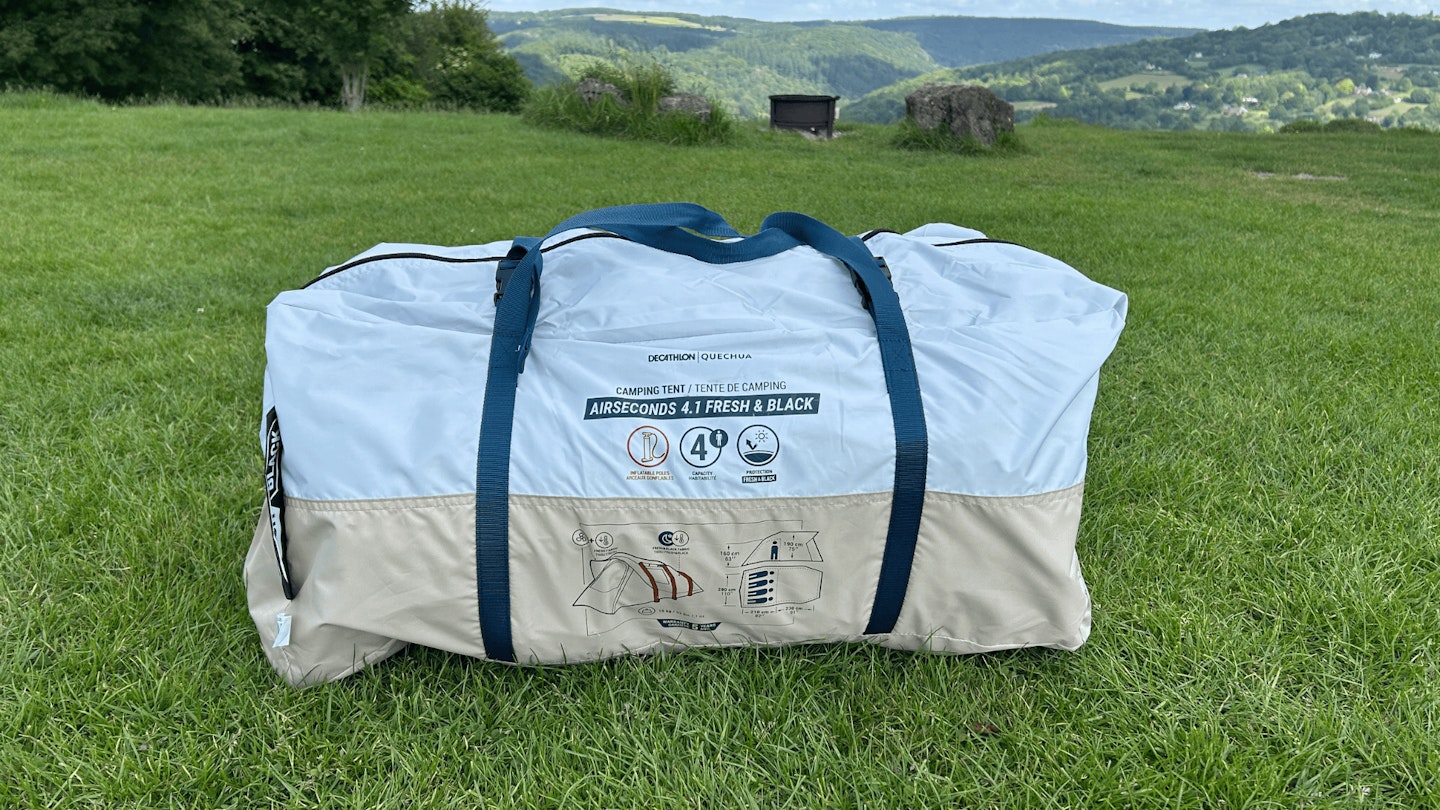
Weighing in at 15kg, when packed down the 4-Man Inflatable Camping Tent isn’t as tricky to carry as some inflatable tents. Indeed, one person should be enough to carry it short distance, though a two-person carry or a wheelbarrow would be the order of the day from, say, the car park to the hangout at a music festival.
Decathlon doesn't stage an official packed size but I measured it as 67 x 42 x 32cm. Again, this isn’t as large as some and I definitely felt less cumbersome when hauling it about than I did with something like Outwell’s Colorado 5 Air. You could fit two of these in the boot of an average car. As mentioned, the carry-bag’s opening makes packing it away relatively easy too.
Features
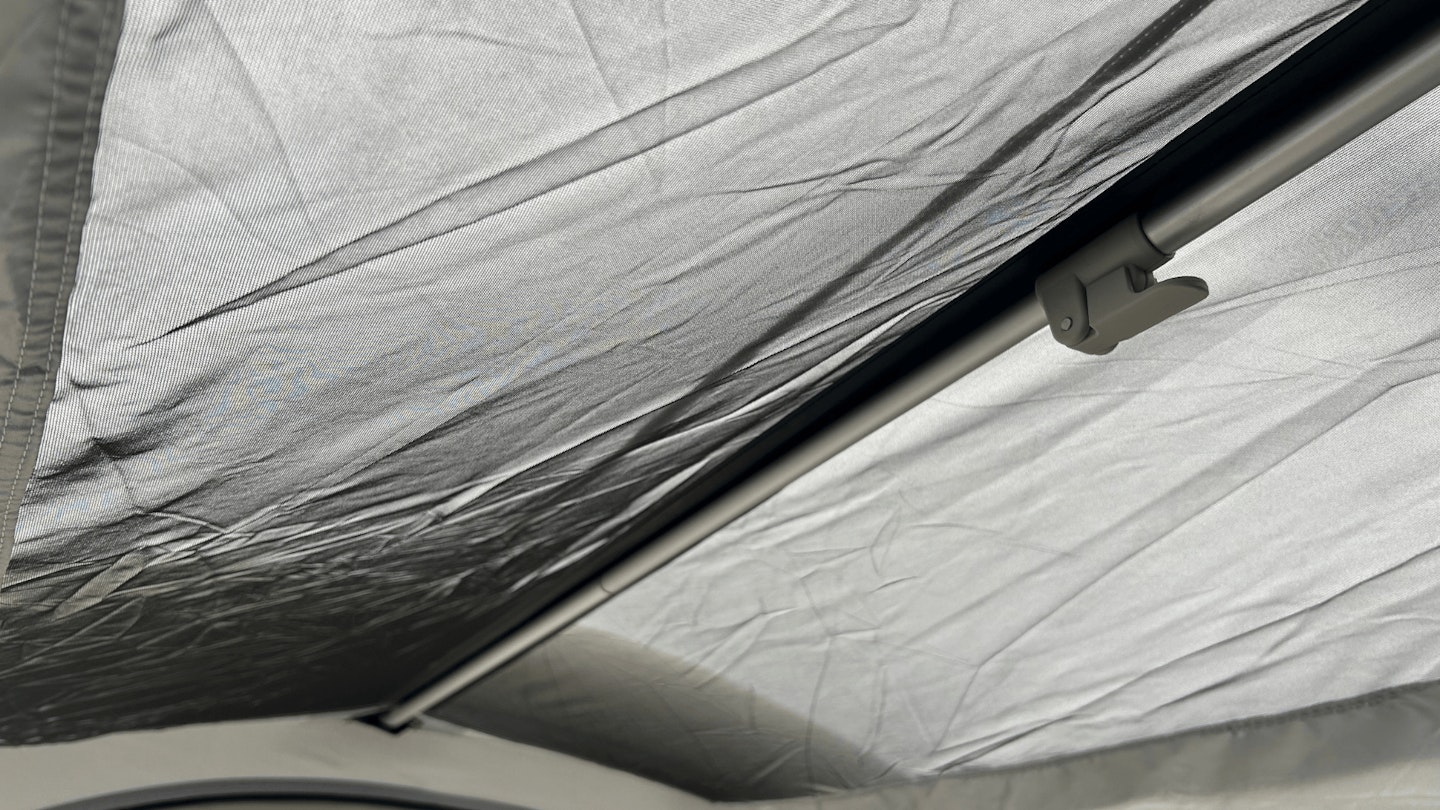
I found the design of the living area’s window shutters to be a little lacking when open. Instead of being able to roll the material up and tie it off out of the way, it simply hangs down, with one end hanging lower than the other and looking a tad untidy. I was able to stuff it back in towards the bottom of the window but it’s hardly an elegant solution.
The living room’s groundsheet is removable on one hand and can also be lifted at the entrance to protect against rain on the other.
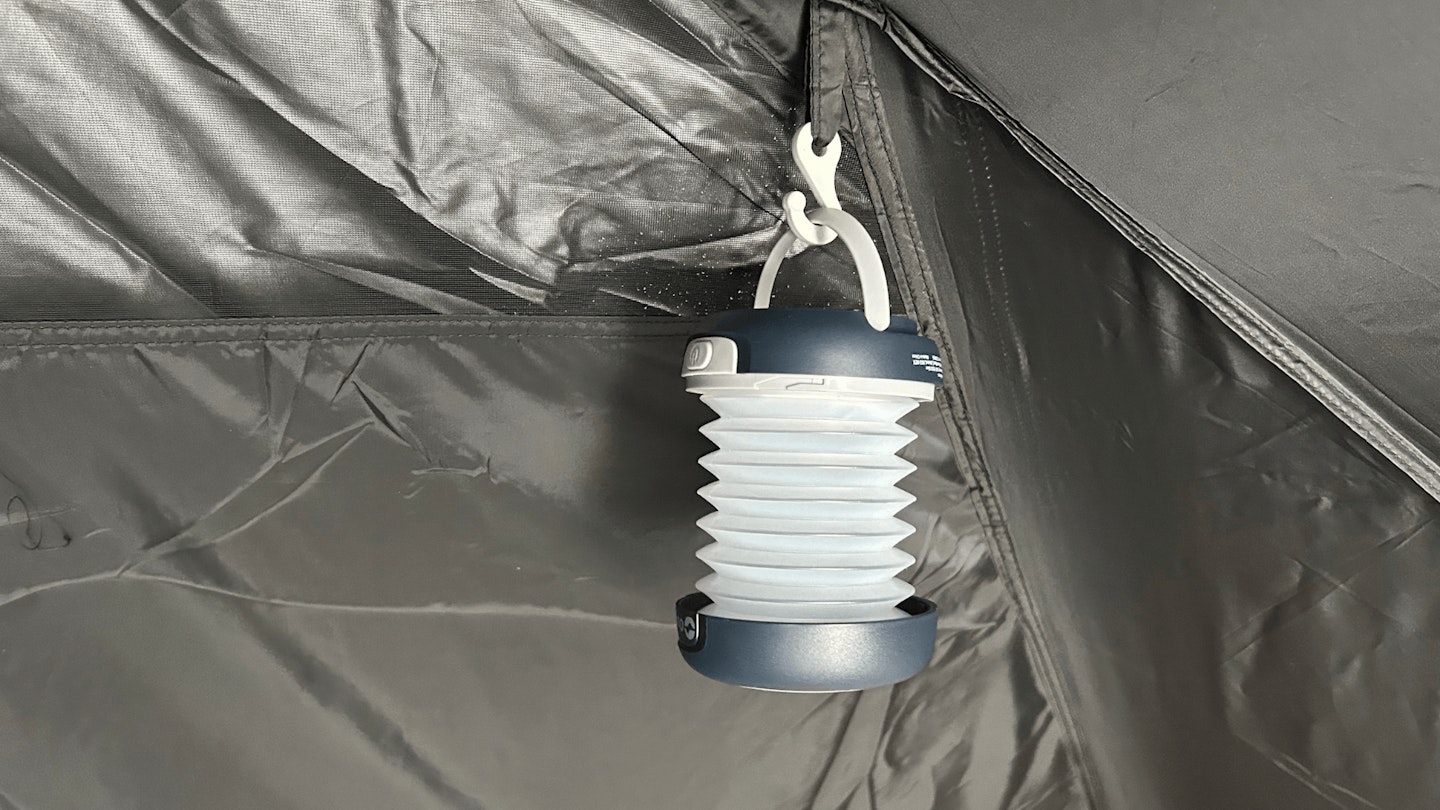
I like that the tent has several storage pouches, with some in both the living room and the bedroom. It’s nice to be able to keep valuables and other items off the ground, particularly when kids are involved. Many are the times that a lost item shows up buried underneath a camping mattress or similar when packing out – not so with this tent.
There are also hanging loops placed strategically for things like camping lanterns. I guess one downside of a really dark bedroom is not being able to pore over a topo map or get stuck into a good mag or novel – so, the possibility of hanging a light is a welcome one.
Final verdict

You get a hell of a lot of bang for your buck with the Quechua 4-Man Inflatable Camping Tent. It’s air beam structure means plenty of space, while the Fresh & Black fabrics make its bedrooms a wonderfully cool place to be during July heatwaves, not to mention impressively dark in the mornings.
It’s not flashy but it does everything it needs to, though its fabrics and structure are less weatherproof than more expensive options. I also just wish Decathlon had bundled in the pump! Overall, we'd give this one a rating of 76%.
If you're looking for a solo venture after spending so much time with your family, check out our roundup of the best wild camping tents.
Shop this product
About the author

As a qualified Mountain Leader, avid wild camper and a family man, Alex Foxfield enjoys camping in all its forms. An expert on all things outdoor gear, he’s been testing and reviewing camping kit and tents – from solo backpacking shelters to palatial family car camping tents – for many years.

